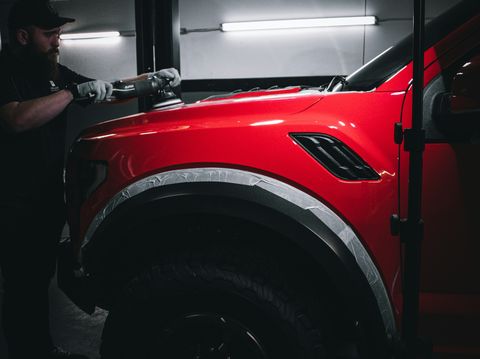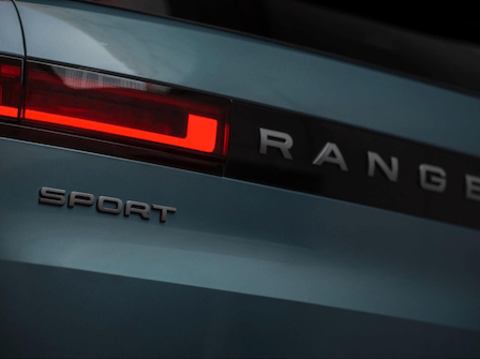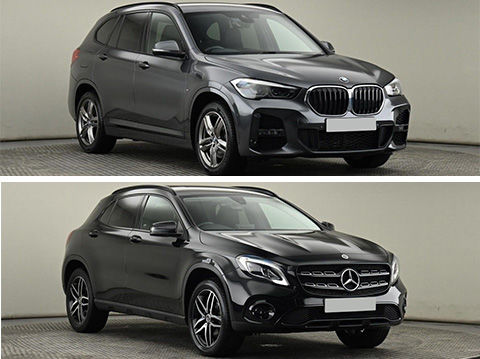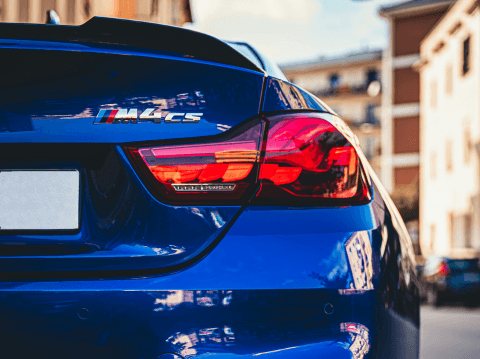Synthetic vs Ceramic: Best Paint Protection Product for Your Vehicle

Choosing the right paint protection for your vehicle is crucial to maintaining its aesthetic appeal and resale value. Car owners are often caught between two paint protection choices: synthetic and ceramic paint protection. Here’s what you need to know about the vehicle paint protection options.
Why Is Paint Protection Necessary?
Before diving into the specifics of synthetic and ceramic coatings, it's essential to understand why paint protection is necessary. The exterior of your vehicle is constantly exposed to a variety of environmental factors, including UV rays, acid rain, bird droppings, tree sap, and road salt. These elements can deteriorate your car's paintwork over time, leading to fading, oxidation, and corrosion. A reliable paint protection product serves as a barrier, shielding the paint from these harmful elements and preserving the vehicle's appearance and integrity.
Synthetic Paint Protection
Synthetic paint protection, widely known as sealant, is a chemical composition that bonds with the paint on a molecular level, creating a protective layer over the vehicle's exterior. These products are designed to offer a durable barrier against environmental factors, making them a popular choice among car owners for their versatility and protective qualities.
Advantages of Synthetic Paint Protection
- High-level Protection: Synthetic paint protection protects against plant & tree sap, atmospheric pollutants and UV exposure.
- Ease of Application: Synthetic sealants can be easily applied by hand or with a polisher.
- Cost Efficiency: Compared to ceramic coatings, synthetic sealants are more affordable, offering a cost-effective solution for regular maintenance.
- Durability: Although not as long-lasting as ceramic coatings, synthetic sealants can protect your vehicle for up to six months before requiring reapplication.
Despite these benefits, synthetic protectants may not offer the same level of hardness and protection against light scratches as ceramic coatings.
At Saxton 4x4, we offer Williams paint protection for the interior and exterior of your car. This synthetic coat preserves your paintwork and interior fabrics in factory finish condition without the need to polish your car.
Ceramic Paint Protection
Ceramic coatings, such as 9H, Silica & Polysilazane, represent the forefront of paint protection technology. These coatings are made from materials like silicon dioxide, which comes from quartz and other materials, to form a hard, durable layer over the paint. This layer not only protects the paint from environmental damage but also adds a distinctive shine and depth to the vehicle's appearance.
Advantages of Ceramic Paint Protection
- Great Protection: Ceramic coating protects your paintwork from high UV rays and chemical stains
- Superior Durability: Ceramic coatings can last several years, withstanding harsh environmental conditions and protecting against chemical etchings, oxidation, and UV damage.
- Hydrophobic Properties: The coating creates a water-repellent surface, making it easier to clean the car and maintain its appearance.
- Enhanced Aesthetics: Ceramic coatings provide a glossy finish that enhances the vehicle's colour and clarity, making it look consistently new.
While ceramic coatings offer unparalleled protection and aesthetic benefits, they are more expensive than synthetic options and require professional application for optimal results.
Making an Informed Decision
Choosing between synthetic and ceramic paint protection depends on several factors, including your budget, the level of protection desired, and how much time you're willing to invest in vehicle maintenance. Here are some considerations to help guide your decision:
- Budget: If cost is a significant concern, synthetic sealants provide a more affordable option for protecting your vehicle's paint. However, if you're willing to invest in long-term protection, the initial higher cost of a ceramic coating may be more cost-effective over time.
- Maintenance and Longevity: If you prefer a low-maintenance solution, ceramic coatings offer a longer-lasting protective layer that requires less frequent applications. Conversely, synthetic sealants, while easier and less costly to apply, will need more regular maintenance.
- Vehicle Usage: Consider how you use your vehicle. If it's exposed to the elements regularly or used in conditions that might cause more wear and tear, a ceramic coating could provide the robust protection needed. For less frequently used vehicles or those kept in milder conditions, a synthetic sealant might suffice.
Both synthetic and ceramic paint protection products offer valuable benefits to maintain and enhance your vehicle's appearance. Synthetic sealants provide an accessible, cost-effective solution for regular maintenance, while ceramic coatings offer the ultimate protection with additional aesthetic benefits. Your choice should align with your specific needs, preferences, and how you value your vehicle's maintenance and appearance.
Header image credit: https://unsplash.com/photos/man-in-white-t-shirt-standing-beside-red-car-q94A6k81lAQ




